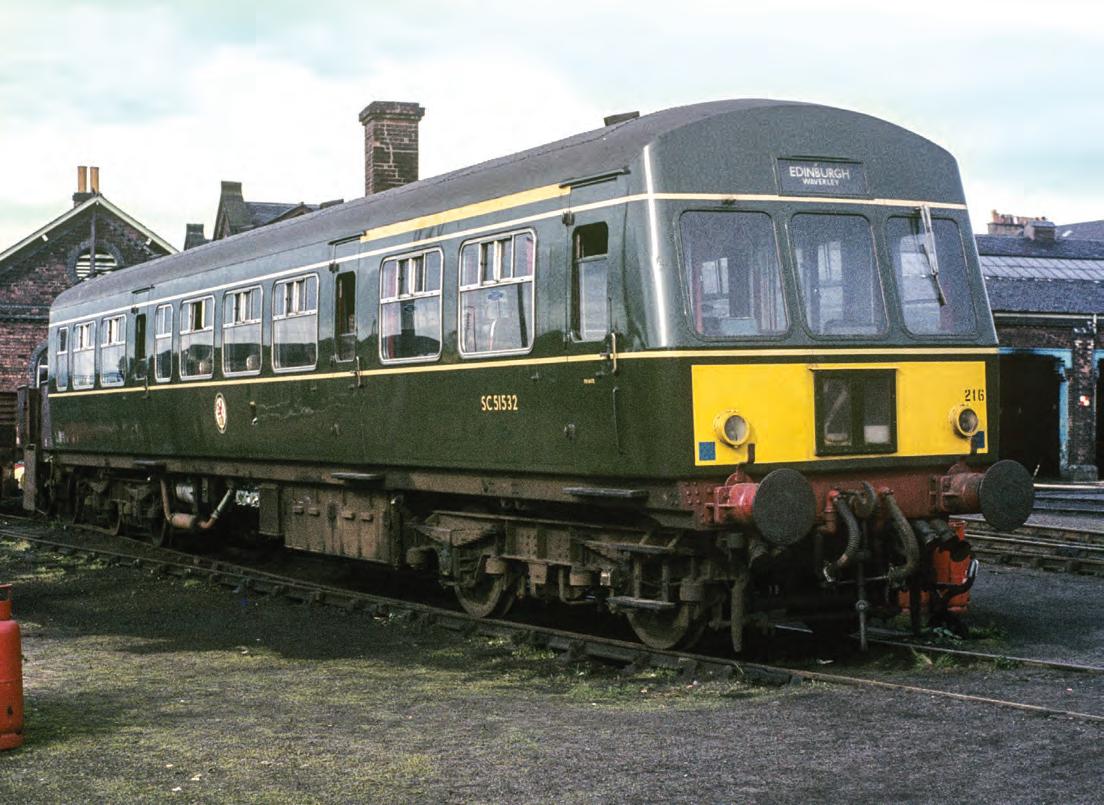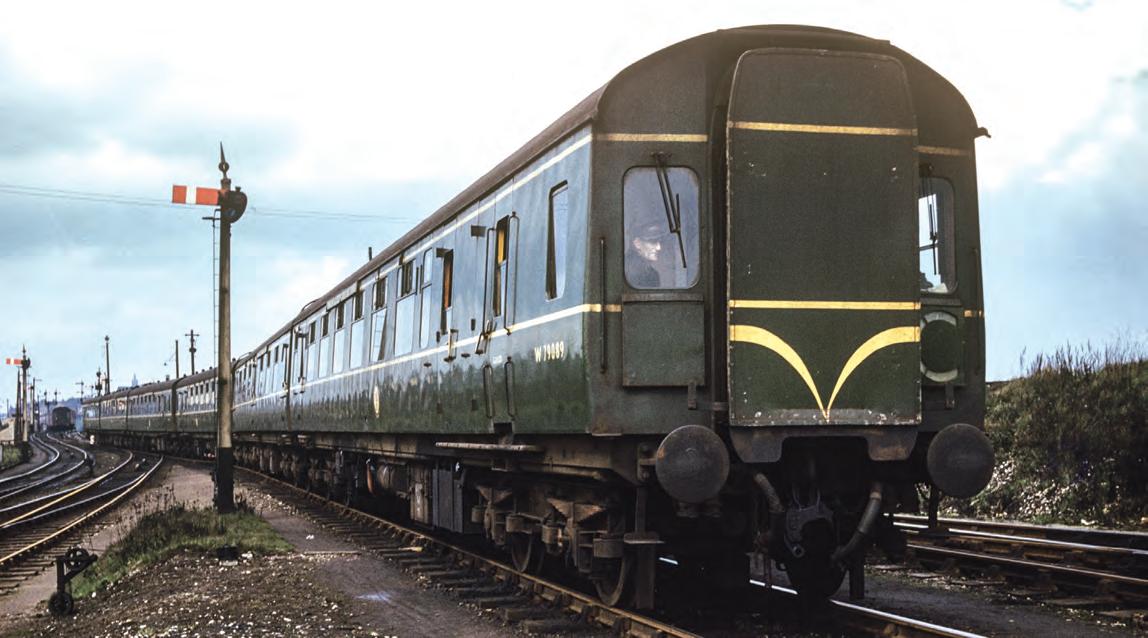
2 minute read
The Progenitors - GWR Railcars
The Great Western Railway diesel railcars introduced in the 1930s were the forerunners of the BR first generation DMUs. Ex-GWR Railcar W24W in British Railways crimson and cream livery is at Easton Court on the line between Bewdley and Woofferton. This route, including Easton Court station, closed west of Tenbury Wells in 1961, with the section between Bewdley and Tenbury Wells closing the following year. Between the wars, the GWR took the lead in introducing a fleet of diesel railcars both for lightly-used long-distance cross-country routes and for branch lines. Early railcars were streamlined in appearance and, apart from one, lacked conventional buffers and drawgear. Later cars, including number 24, had a more angular appearance and had buffers and drawgear. Two parcels cars and two 2-car units were also built, some lasting into the early 1960s. [R.Carroll Collection]
An unidentified ex-GWR railcar in BR green livery at Highley on the Severn Valley line in July 1962, shortly before withdrawal. The GWR railcars were powered by a pair of AEC diesel engines coupled to a mechanical transmission. AEC itself had a long history of bus construction, having been the Associated Equipment Company of the London General Omnibus Company. The two were separated when London Transport was formed in 1933. The mechanical arrangements of the GWR railcars formed the basis for many of the DMUs constructed by or for British Railways from 1954 until 1963. [R.Carroll Collection]

In addition to passenger railcars, the GWR had two that were built for parcels traffic. Number 34, later W34W was to the later, angular body design, with drawgear but number 17, later W17W, was of the earlier streamlined shape and lacked drawgear. The vehicle is in BR crimson livery, around the time of its withdrawal in 1959. [R.Carroll Collection]

Although the mass production of DMUs for British Railways in the 1950s is often associated with the 1955 Modernisation Plan, BR had introduced its first production DMUs the previous year. The first eight 2-car sets built at Derby works on short 57ft frames were powered by a pair of 125hp Leyland engines on each car, coupled to a hydraulic transmission. This arrangement was similar to that used on a prototype diesel unit built by the London Midland & Scottish Railway but was not used on any subsequent units. This meant that the first eight sets were non-standard and were also not capable of working in multiple with any other units, but only within class. Both cars were powered as the units were intended for steeply-graded routes in the West Riding of Yorkshire. Being of lightweight alloy construction, these units became known as ‘Derby Lightweights’. In a black and white image, one of these early twins is near Leeds Central in the mid-1950s. When BR introduced coupling codes to distinguish units with different and incompatible multiple-unit (MU) systems, these units were coded red triangle. Being non-standard, they were all withdrawn in 1964. [R.Carroll Collection]






